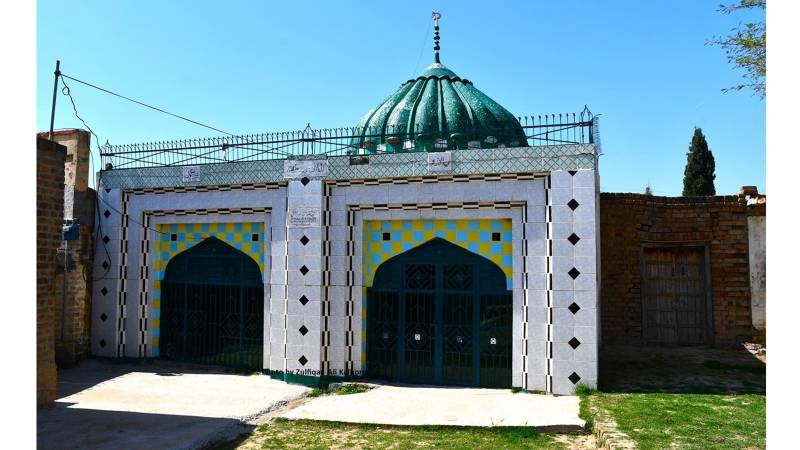
Note: All photos by the writer
Chak Bahadur village, a place of historical significance, is located approximately 3 km south of Daultala town in Gujar Khan tehsil. It is renowned for the shrine of Sain Karam Bakhsh. Recently, I had the opportunity to visit the shrine of Sain Karam Bakhsh at Chak Bahadur village, accompanied by Hasan Nawaz Shah, a poet, historian and writer of several books. His expertise in the Punjabi, Urdu, and Persian literature, as well as the Suhrawardiyya order, with a particular focus on his own tehsil Gujar Khan, is unparalleled. He is currently writing a book titled Tazkira Ulama-e-Gujar Khan on religious scholars of Gujar Khan. Since he had already visited the shrine of Sain Karam Bakhsh, he wanted me to see it too, and so, he took me there.
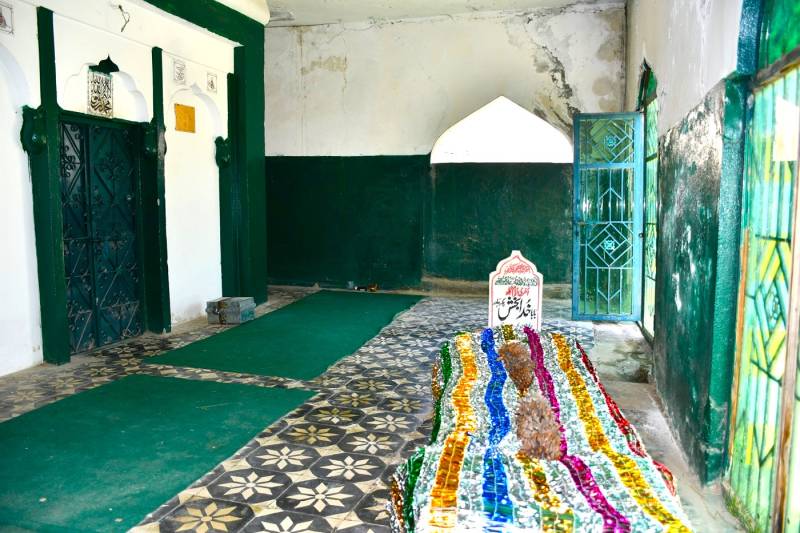
We visited a shrine in Chak Bahadur village, where we met a few intellectuals from the village, particularly Master Adalat, a retired primary school teacher. Master Adalat used to teach in a primary school in Daultala and is considered to be the most knowledgeable person in the village. We interviewed him about Sain Karam Bakhsh in particular.
Sain Karam Bakhsh was a mystic who gained recognition in the 19th century. Syed Muhammad Syed Muhammad Chanan Shah Najafi Bajranvi wrote a biography of Sain Karam Bakhsh, which provides detailed information about the different stages of his life. This includes his marriage, spiritual retreats to Kashmir and the jungles of Murree, divorce, travels, meetings with religious scholars, even dialogue with one religious scholar and eventual settlement at Chak Bahadur in Gujar Khan. Sawaneh Umri Sain Karam Bakhsh is full of miracles.
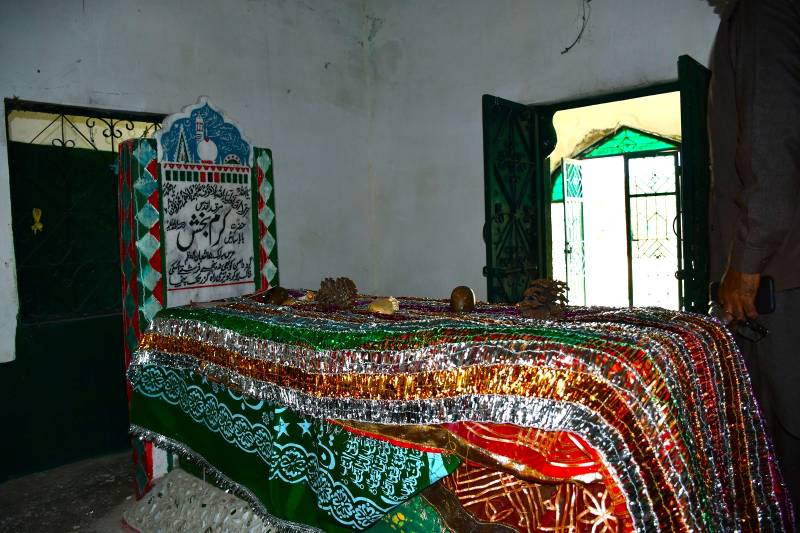
According to Sawaneh Umri Sain Karam Bakhsh by Syed Muhammad Chanan Shah Najafi Bajranvi, Sain Karam Bakhsh was born in Pind Maira near Phulgaran village in the Bara Kahu area. We are told that his grandfather, a landlord and a Rajput, owned about 32 acres of land. His grandfather had two sons, but their names were unknown to Syed Muhammad Chanan Shah Najafi Bajranvi. However, he wrote about Mian Hasham Ali, a cousin of Sain Karam Bakhsh, who was the first to move to Ahdi Moza in Gujar Khan to receive an education at a madrassah. This detailed account of Sain Karam Bakhsh's early life and family background provides a comprehensive understanding of the mystic's journey, enriching our knowledge about him.
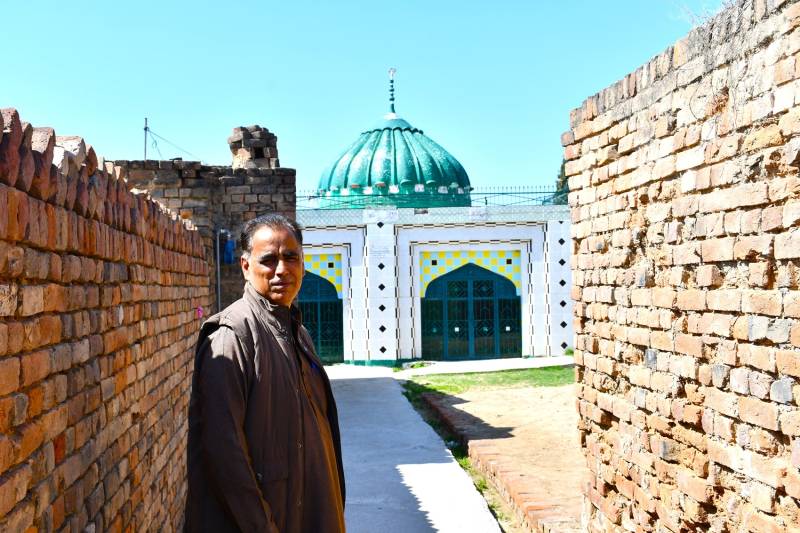
Sain Karam Bakhsh was a righteous person and spent his time in the khanqah in the village before moving to other places. Despite being from a well-to-do family in the village, Sain Karam Bakhsh preferred to lead a simple life. Sain Karam Bakhsh's personal life was marked by his marriage to Karam Bi, a woman from Phagwari village in Murree, who belonged to the Dhund clan. Her father, Mian Noor Muhammad, was a respected figure in their village. The couple had a daughter Faiz Bi and a son Hayatullah, who unfortunately died in infancy. Sain Karam Bakhsh's life was characterised by his devoutness and his strong commitment to prayers. He embarked on a spiritual journey to Kashmir, where he spent two years. Concerned for his wellbeing, his wife sent her father to find him, and he was eventually brought back to the village. After a brief six-month stay at home, he ventured into the jungles of Murree, where he immersed himself in solitude and spiritual contemplation for five years.
It said that Sain Karam Bakhsh himself remarked that people would first say salutations to his disciple Baba Khuda Bakhsh and later to him
It is believed that Karam Bi later divorced Sain Karam Bakhsh and married Mian Ismail Afghan.
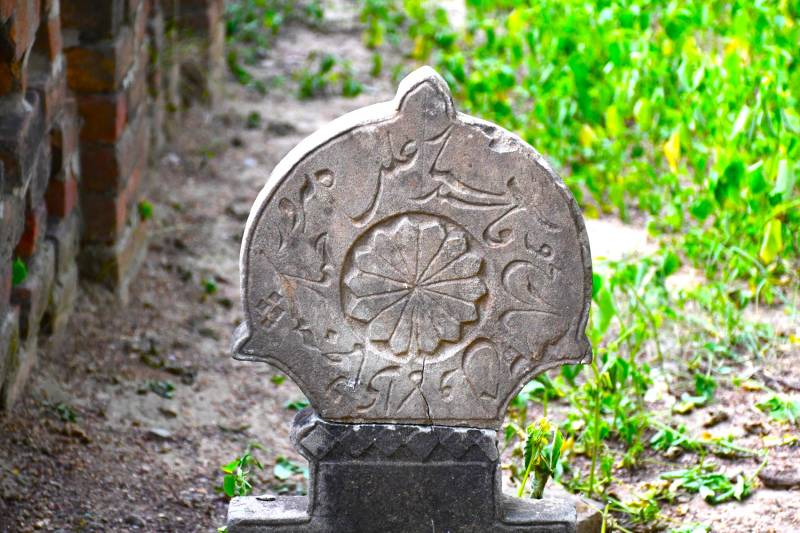
Sain Karam Baksh adopted the life of a dervish and first travelled to Hasal near Daultala. After leaving Hasal, he travelled from one village to another, such as Mastala, Jakhari, Chak Madari, Natha Chhatar, Thekireyan, and the surrounding areas of Ahdi and Chak Bahadur. Eventually, he settled in Chak Bahadur village, where his devoted disciple Baba Khuda Bakhsh was always available to serve him.
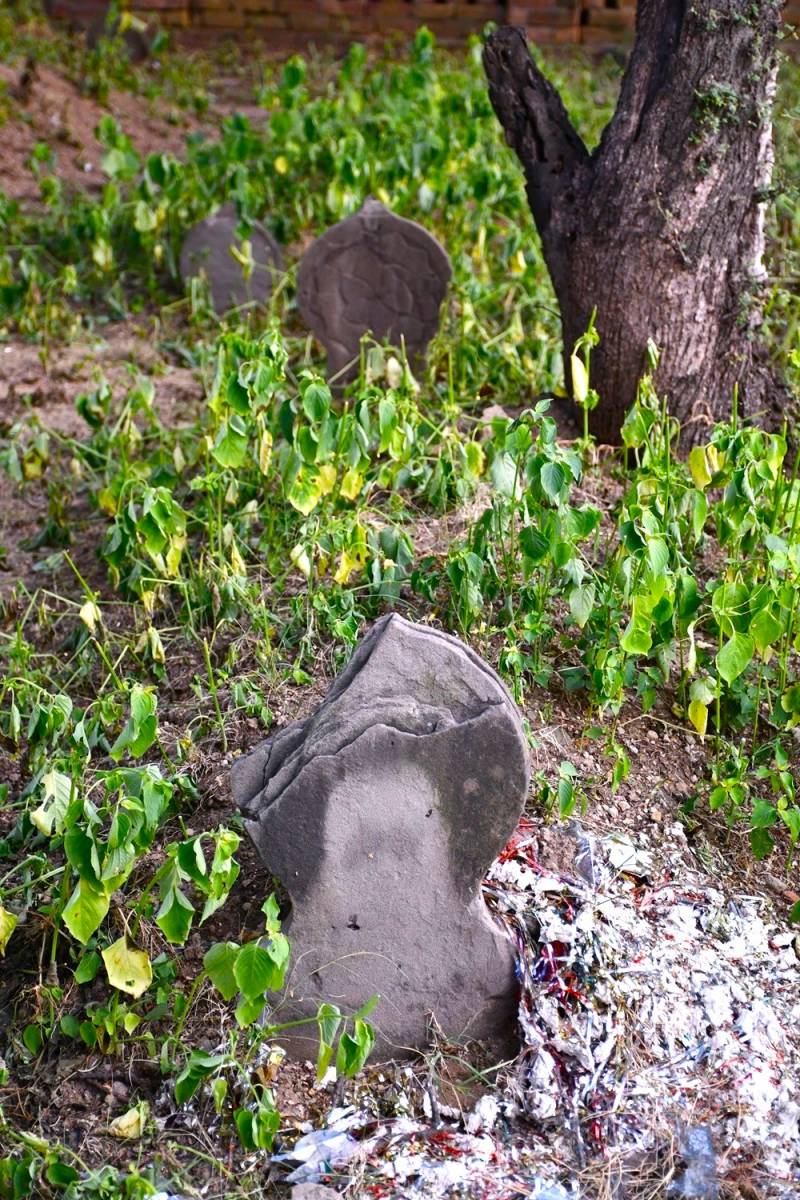
Baba Syed Gulab Shah Shirazi met Sain Karam Bakhsh, his spiritual master, in Chak Bahadur. Initially, he went to Lahore to become a disciple of Qutab Shah Bukhari. However, Qutab Shah Bukhari directed him to meet a mystic who lived close to his village, referring to Sain Karam Bakhsh. Finally, Baba Syed Gulab Shah Shirazi became Sain Karam Bakhsh’s disciple. Sain Karam Bakhsh died probably in 1266 AH/1850 AD in Chak Bahadur village, where he was buried, and later, his disciples built an impressive tomb over his grave. As one enters the shrine of Sain Karam Bakhsh, one notices the first grave, that of Baba Khuda Bakhsh. It said that Sain Karam Bakhsh himself remarked that people would first say salutations to his disciple Baba Khuda Bakhsh and later to him.
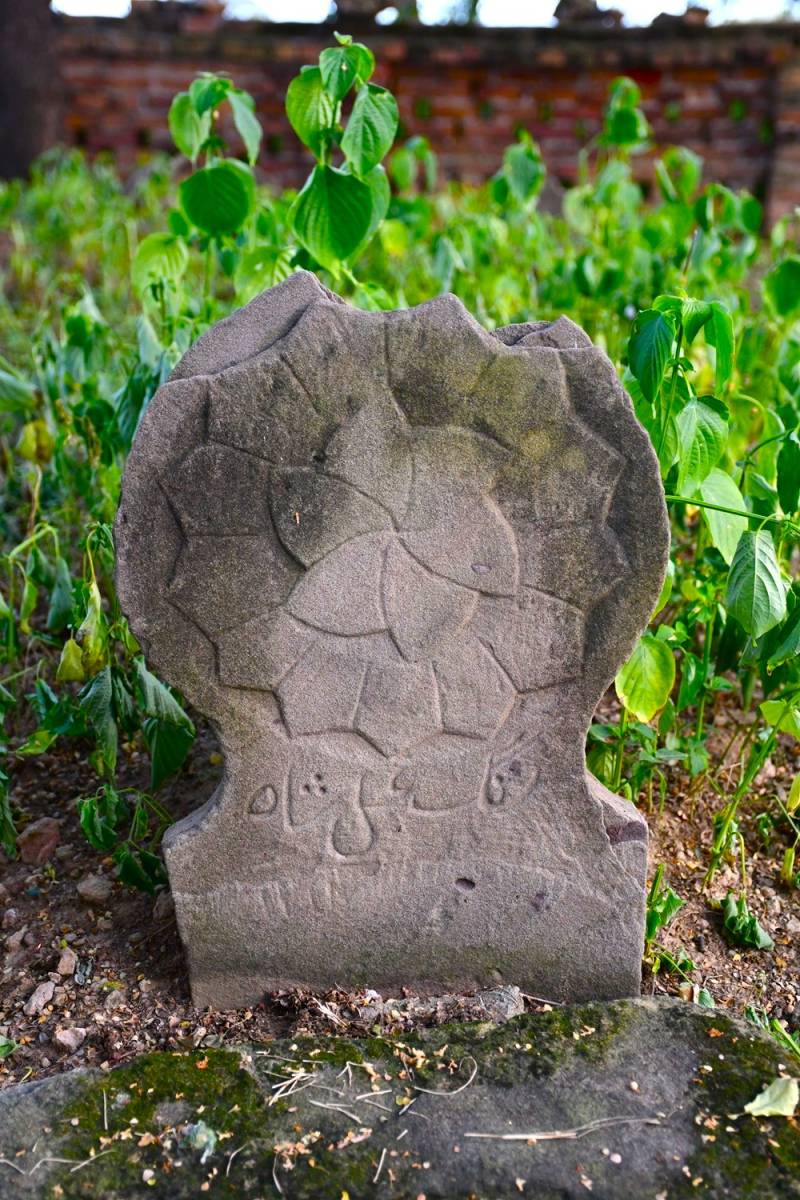
Muslims, Hindus and Sikhs equally respected Sain Karam Bakhsh. It is said that during his stay near a stream between Daultala and Hasal, one of his Sikh disciples from Daultala village would often visit him. Later, the grandson of that Sikh, Bhai Narain Singh, became an honorary Magistrate of Daulatla with the blessings of Sain Karam Bakhsh. There were several disciples of Sain Karam Bakhsh, including Alif Lohar of Mastala, Rehmatullah alias Faiz Bakhsh of Ahdi village, Baba Noor, Mai Saphi and Sain Khuda Bakhsh of Chak Bahadur, grandfather of Bhai Narain Singh of Daultala. Malik Feroze of Hazro’s Shamsabad was also a follower of Sain Karam Bakhsh. Malik Feroze was the Tehsildar of Gujar Khan who retired in 1269 AH/1853 AD. A Hindu police officer in charge of Jatli police station was also a follower of Sain Karam Bakhsh, who used to send daily meals to him at Chak Bahadur.
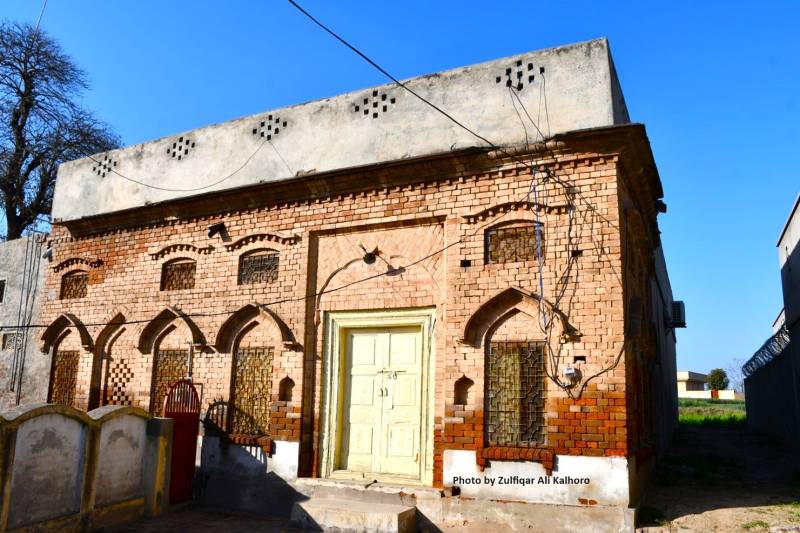
Sain Karam Bakhsh was spiritually connected to Barri Imam (d 1705). Baba Syed Gulab Shah Shirazi, one of his leading disciples, spread his spiritual message and was a renowned mystic of Bajrana village, situated 2 km east of Miana Mohra in Gujar Khan.
Baba Syed Gulab Shah Shirazi died on the 9th of Dhuʻl-Hijjah 1308/July 15, 1891, in Bajrana village. After his demise, Syed Muhammad Chanan Shah Najafi Bajranvi became the Sajjada Nashin of Darbar. The shrine of Baba Syed Gulab Shah Shirazi is located in Bajrana village. Near the shrine is the bhethak of Syed Muhammad Chanan Shah Najafi Bajranvi.
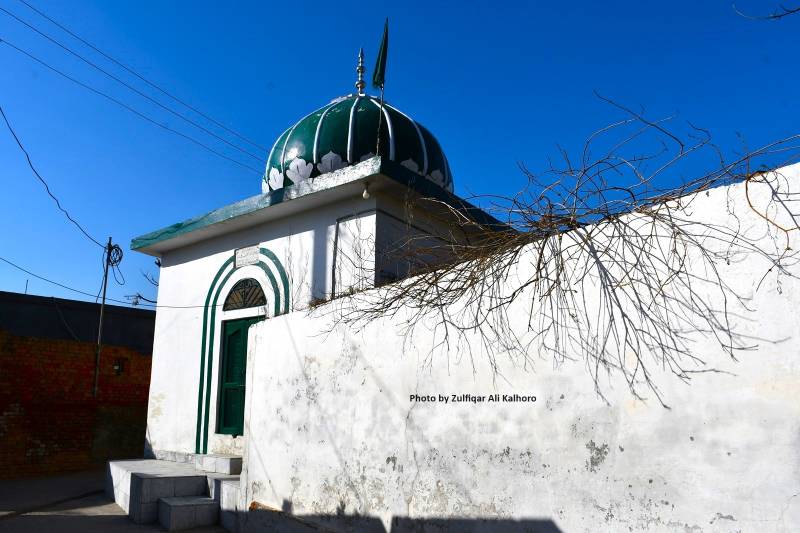
Syed Akhlas Hussain Shah, who completed an MPhil dissertation on Syed Chanan Shah titled Syed Chanan Shah Najafi: Hayat Wa Fan from Allama Iqbal Open University Islamabad, believes that Syed Muhammad Chanan Shah was a Punjabi and Urdu poet and the author of several books. According to Aal-e-Imran (2013:217), the author of Pothohar Men Aulad-e- Hazrat Imam Ali Naqi (AS) Syed Chanan Shah Najafi Bajranvi wrote the following books:
- Jhagara Huqa wa Kooza (published in 1910)
- Tuhfa Rasooli (published in 1923)
- Tuhfa Darbar Golra (published in 1923)
- Kuliyat
- Qissa Sassi-Punhun
- Tuhfa Awani
- Jani Di Faryad
- Qissa Saif ul- Malook
- Hazrat Baba Gulab Shah Shirazi
- Faryad-e-Gham (published in 1913)
- Si Harfi Madah Hzarat Ali (AS)
- Si Harfi Heer Ranjha
- Tuhfa Jalalpuri
- Melay
- Sawaneh Umri Sain Karam Bakhsh
- Shajra al Khizr
- Masla Taoon
He was a deputy of Qazi Sultan Mehmood Qadiri (d 1919), whose shrine is located at Awan Sharif in Gujrat district. According to Pothohar Men Aulad –e- Hazrat Imam Ali Naqi (As) by Syed Aal-e-Imran (2013:214), Syed Muhammad Chanan Shah Najafi Bajranvi received religious education from Maulana Ziaullah of Nata Gujarmal village. He had three sons- Syed Saqlain Ali Shah, Syed Mazhar Ali Shah and Syed Ghazanfar Ali Shah.
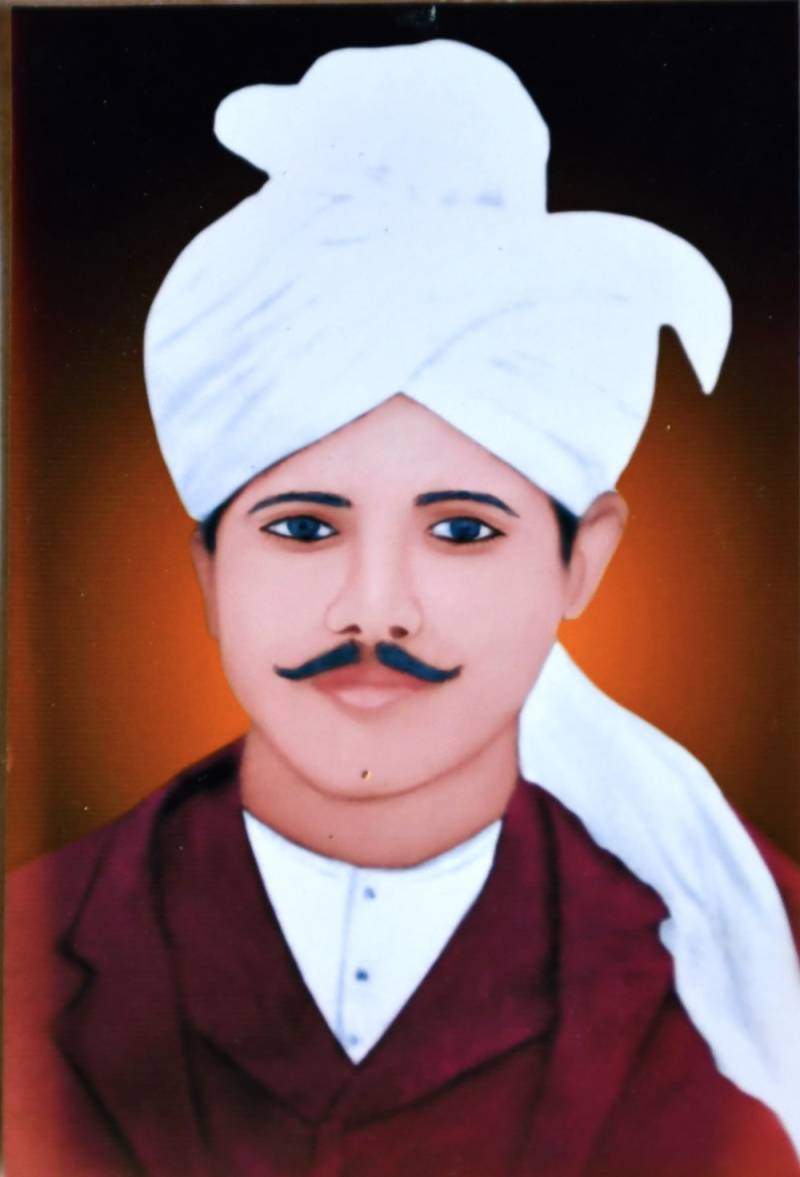
Syed Muhammad Chanan Shah Najafi Bajranvi died in 1928 and was buried in a village graveyard. The graves of Syed Chanan Shah Bajranvi and his family members are located inside an enclosure in the cemetery. The grave of Syed Mazhar Hussain Shah (d 1957) is located adjacent to the grave of Syed Chanan Shah Najafi Bajranvi. Adjacent to the grave of Syed Mazhar Hussain Shah is the grave of Ghazanfar Ali Shah (d 2015), son of Syed Muhammad Chanan Shah Najafi Bajranvi.
The stone-carved grave of Syed Sattar Ali Shah is also (d 1915) located inside the enclosure. Other graves bear the names Fateh Bibi, Mai Jannat Bibi, Mai Badshah Bibi and Sarwar Shah (d 1907), the brother of Syed Chanan Shah Najafi Bajranvi. The grave of Rang Ali Shah, also known as Rangey Shah or Ranga Shah, is also located inside the same enclosure. Syed Rang Ali Shah (d 1907) was the father of Syed Muhammad Chanan Shah Bajranvi. The tombstone bears the name of Syed Rang Ali Shah. He hailed from Dhangdev Syedan in Gujar Khan, and after marrying Gulab Bibi, the niece of Syed Gulab Shah Shirazi, he left his village and settled in Bajrana. There are several stone-carved graves in the Bajrana graveyard.

